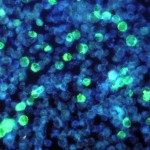Link to Pubmed [PMID] – 28359987
Link to DOI – S0952-7915(17)30038-910.1016/j.coi.2017.03.010
Curr Opin Immunol 2017 Feb; 44(): 61-68
Innate lymphoid cells (ILCs) are lineage- and antigen receptor-negative lymphocytes including natural killer (NK) cells and at least three distinguishable cell subsets (ILC1, ILC2, ILC3) that rapidly produce cytokines (IFN-γ, IL-5, IL-13, IL-17A, IL-22) upon activation. As such, ILCs can act as first-line defenders in the context of infection, inflammation and cancer. Because of the strong conservation between the expression of key transcription factors that can drive signature cytokine outputs in ILCs and differentiated helper T cells, it has been proposed that ILCs represent innate counterparts of the latter. Several distinct ILC precursors (ILCP) with pan-ILC (giving rise to all ILCs) or subset-restricted potentials have been described in both mouse and man. How and where these different ILCP give rise to more mature tissue-resident ILCs remains unclear. Recently, environmental signals have been shown to epigenetically influence canonical ILC differentiation pathways, generating substantial functional plasticity. These new results suggest that while ILC differentiation may be ‘fixed’ in principle, it remains ‘flexible’ in practice. A more comprehensive knowledge in the molecular mechanisms that regulate ILC development and effector functions may allow for therapeutic manipulation of ILCs for diverse disease conditions.

